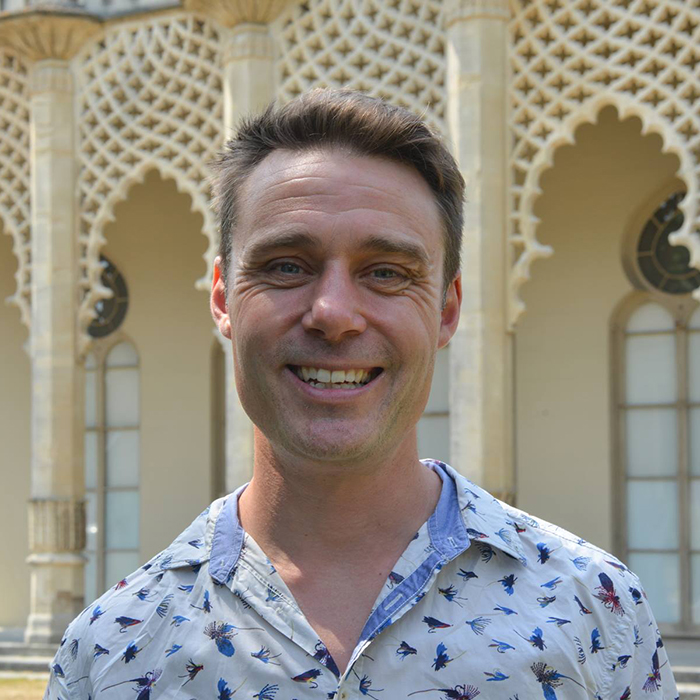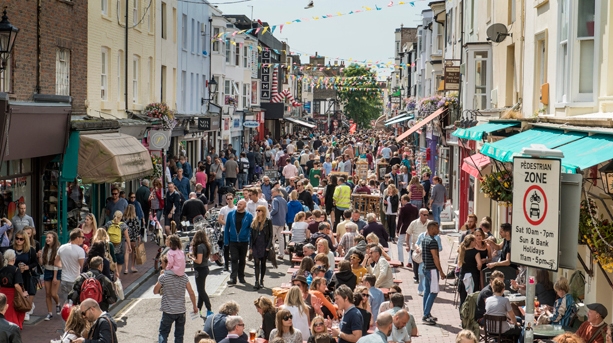During lockdown, while we adapted almost every part of our lives, it was virtually impossible not to notice the sudden drop in traffic levels and pollution.
In Brighton and Hove, we saw a 70 per cent drop in traffic. Roads that were once a polluted gridlock became free for everyone to enjoy.
We witnessed a huge increase in families out on bikes – many for the first time – and we heard birdsong where once it was drowned out by the constant din of traffic.
The health benefits of the sudden drop in air pollution were immediate, with 11,000 fewer deaths in Europe due to air pollution.
In the UK, 64,000 people die each year due to air pollution. It’s a national crisis and public health emergency that we would be negligent to ignore.
Given this, it would be strange not to rethink our urban environment, a topic of discussion for some time. Yet looking at our road use does not mean “banning cars” as many suggest.
The purpose of traffic reduction is to create healthier and pleasant neighbourhoods that benefit everyone, boost local business and help the environment.
While the environmental and health arguments for traffic reduction are indisputable, we know the economic case is more sensitive.
Shops and businesses are rightly concerned that a reduction in traffic and parking could lead to a fall in sales.
We must take the concerns of our retailers seriously but we can draw on a huge amount of data from around the world – and indeed in our own city – that shows traffic reduction greatly benefits local business.
A Transport for London report has shown that improvements for walking and cycling in the high street can lead to a staggering 30 per cent increase in retail sales – and that cycle parking alone delivers five times the retail spend per square meter than the same area for car parking.
In London, high streets that reduced traffic saw a 216 per cent increase in people stopping, sitting or socialising.
When Madrid closed its town centre to traffic in 2018, Bloomberg reported a 9.5 per cent increase in retail sales and this is the reality the world over, from Utrecht to San Francisco.

For any transition to work, our local businesses must be as much the beneficiary of traffic free space as pedestrians and cyclists.
That’s also why, contrary to the headlines, traffic reduction does not mean an all-out “ban on cars”.
Traders, residents and retailers need to use vehicles – and they will benefit enormously from not wasting hundreds of hours a year sitting in traffic.
Likewise, people with disabilities should never be excluded from traffic-free space but should benefit from having ease of access and infrastructure that considers a wheelchair user, or someone with lower mobility, first.
In contrast, narrow, cluttered pavements and speeding two-way traffic all too often act as a barrier to people’s safety and access.
In addition, studies show that it is also common for a business to overestimate the number of customers who arrive by car.
This is not the fault of the business at all, not least because it is a common response from almost everywhere.

On the Lea Bridge Road in London, retailers believed 63 per cent of their customers arrived by car when it was actually just 20 per cent. In Bristol, retailers overestimated the importance of car-based trade by almost 100 per cent.
In our own city we can look to New Road and East Street – where restaurants said that pedestrianisation boosted business in the area.
When Sydney Street closed to weekend traffic, retailers reported an increase in sales.
Brighton and Hove already boasts a world-class “café culture”, popular with residents and tourists alike – and the option of a stroll around our many independent businesses draws many people to visit our city each year.
With the rise of online shopping and a decline in the fortunes of retailers once considered “high street staples” such as Debenhams and others, people need more from their high streets. They want a day out.
Far from a decline in business, the closure of Madeira Drive to traffic must be taken as a long overdue opportunity to enhance this space. Think market stalls, café tables, food stands and farmers’ markets.
Events should be welcome – and there are mechanisms to apply for permission, like elsewhere in the city.
Allowing our cafés, restaurants and bars to spill out on to reclaimed road space would not only create happy, buzzing neighbourhoods, it would also be great for business.
With studies telling us that less traffic can act as an incentive for more visitors, in an area urgently in need of regeneration, we need to take these possibilities seriously.
The evidence is everywhere – reclaiming our streets from traffic makes them healthier and welcoming and that encourages people to spend more.
Even the government is urging local councils to install more of these changes, providing a new Active Travel Fund for walking and cycling measures.
We can use this money to improve our urban centres but also provide our retailers with a welcome increase in footfall and spending.
We are now at a turning point where we have a chance to transform our environment in Brighton and Hove.
Our city is creative and entrepreneurial – and we can transform it to make healthy spaces from which we will reap the social, environmental and economic benefits of vibrant, traffic-free streets.
Councillor Jamie Lloyd is a Green opposition member of Brighton and Hove City Council’s Environment, Transport and Sustainability Committee.











This article talks about the benefits of pedestrianising retail areas. Yes, there’s good evidence this can help. But the council isn’t doing this – it is reducing vehicle flow on main routes into and out of the city. And, worst of all, it is doing this without putting in an alternative for people who don’t live within walking and cycling distance. That’s tourists, many who work in city and those who need to travel out of the city for work/leisure.
Yes, some will switch to cycling. There’s clear evidence that some are. And as a cyclist that’s great. However I also see that if you reduce road capacity by 50% and you don’t get 50% of people switching then pollution will increase. And that’s what we seem to be seeing in a number of areas
If we had plans for park and ride or trams etc then maybe. But the current work has no clear strategic thought behind it and looks to be increasing pollution. Something which will harm us all
Lockdown reduced the wish to go from A to B. Indeed outlawed many of these journeys. We are going back to needing and wishing to travel again. The question should surely be how to do this whilst creating the minimum amount of pollution?
I don’t know what planet Jamie Lloyd lives on but it isn’t this one. He only needs to talk to the traders on Madeira Drive to find out that they are all DOOOMED if Madeira Drive does not re-open pronto.
As it is 30% of shops and businesses will not be re-opening after lockdown.
The last thing we need is clowns like him lying about how it’s done us all a favour!
This is not the South of France, but a seaside town with hills, storms and no protective bay. At leeast 4 months worth of wet or windy weather per year.
I agree that more pollution is being created,with queues at stand still trying to go out of town ,no pull ins for buses in London Road,it’s ridiculous .I thought the council would better things to spend our money on,instead of this mass paving /tarmacing program.
There are so many people holding these naive views, you have to wonder what happened to them during lockdown.
If you look at any other Eurpoean city trying to go car-free you’ll find they have underground rail and a tram service or a cross-city rapid transport system – and then they have park and ride schemes to help visitors arriving in cars.
What do we have in Brighton? An expensive privatised bus service with mostly diesel buses and where routes are cut if they are not profitable.
The current council plans are based on ideology with no long term plan for public transport and zero chance of creating new jobs at a time when the UK goes into a major recession. .
Our key councillors seem to hate commuters, all business, and most tourists. Are we all to buy handcarts to continue trading?
Once I read the sentence about 11,000 fewer deaths in Europe I knew that this was going to be a load of statistical nonsense.
What I see and read is that the City has chosen Students over Tourism.
It will be interesting to see hiw many Students return whenever they are able to resume their’Studies’.
‘we are at turning point’ – on that much I agree the hospitality and tourist industry is on it’s knees. So let’s mess the transort infrastructure around Brighton whilst having no understanding of it’s impact upon those businesses, it’s like putting out fires with gasoline.
What a one sided article! I’ve just seen what has been done on the old Shoreham rd where the duel carriageway has been divided so that 1 lane is for cycles and the other for everything else! Olive rd gets very backlogged as vehicles turn onto old Shoreham rd when 2 lanes are available. When you realise the right turn into Stapley rd is just there anyone can see that 1 lane is idiotic! It’s a bus busy route so I can only imagine it will cause jams whilst people are turning!
Doctrinaire Tosh
Is this by Green Councilor Jamie Lloyd – Hub Officer at Sustrans? Talk about feathering your own nest. It’s quite clear Green Policy is stuff local retail, industry and tourism in some mad zealot dash to be ‘green’ when in fact they may well be doing more harm.
It’s quite the opposite – ALL the UK & international evidence shows that the more walking & cycle friendly an area is, the better the economy for retail & hospitality businesses. It’s not zealotry, it’s simple business sense. See https://tfl.gov.uk/corporate/publications-and-reports/economic-benefits-of-walking-and-cycling for research backing this up.
Unfortunately, most of the UK & international evidence also shows that in virtually every city, many local residents & businesses insist beforehand that their city is completely different to everywhere else (as the usual commentators above are doing) so Brighton & Hove is just following that trend too. Then once things are changes, and places thrive, people deny they ever opposed the change in the first place 🙂